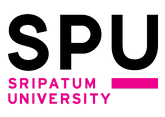Please use this identifier to cite or link to this item:
http://dspace.spu.ac.th/handle/123456789/7207Full metadata record
| DC Field | Value | Language |
|---|---|---|
| dc.contributor.author | สุบิน ยุระรัช | th_TH |
| dc.contributor.author | อรรณพ จีนะวัฒน์ | th_TH |
| dc.contributor.author | วราภรณ์ ไทยมา | th_TH |
| dc.contributor.author | เกรียงไกร สัจจหฤทัย | th_TH |
| dc.contributor.author | ไพบูลย์ สุขวิจิตร บาร์ | th_TH |
| dc.date.accessioned | 2021-01-22T04:04:37Z | - |
| dc.date.available | 2021-01-22T04:04:37Z | - |
| dc.date.issued | 2563-08-13 | - |
| dc.identifier.citation | สุบิน ยุระรัช อรรณพ จีนะวัฒน์ วราภรณ์ ไทยมา เกรียงไกร สัจจหฤทัย และ ไพบูลย์ สุขวิจิตร บาร์. (2563). การสังเคราะห์รายงานการประเมินคุณภาพภายนอกรอบสี่ของศูนย์พัฒนาเด็ก สถานศึกษาขั้นพื้นฐาน สถานศึกษาอาชีวศึกษา และสถานศึกษาอุดมศึกษา. รายงานสืบเนื่องการประชุมนำเสนอผลงานวิจัยระดับบัณฑิตศึกษาระดับชาติ ครั้งที่ 15 ปีการศึกษา 2563 (RSU Grad-Con) (กลุ่มสาขา ศึกษาศาสตร์ มนุษยศาสตร์ และสังคมศาสตร์). วันที่ 13 สิงหาคม 2563 ณ มหาวิทยาลัยรังสิต, 1914-1928. | th_TH |
| dc.identifier.uri | http://dspace.spu.ac.th/handle/123456789/7207 | - |
| dc.description.abstract | การวิจัยเรื่องนี้ออกแบบโดยใช้วิธีวิทยาการวิจัยแบบผสานวิธี มีวัตถุประสงค์ 2 ข้อ คือ (1) เพื่อสังเคราะห์ผลการประเมินและความเห็นของผู้ประเมินเกี่ยวกับจุดเด่น จุดที่ควรพัฒนา และข้อเสนอแนะในการพัฒนาจากรายงานการประเมินคุณภาพภายนอกรอบสี่ และ (2) เพื่อประเมินคุณภาพของรายงานการประเมินคุณภาพภายนอกรอบสี่ การวิจัยเชิงปริมาณ ประชากร คือ ผู้แทนสถานศึกษา จำนวน 123 คน การวิจัยเชิงคุณภาพ ตัวอย่าง คือ (1) รายงานการประเมินคุณภาพภายนอกรอบสี่ จำนวน 123 ฉบับ และ (2) ผู้ให้ข้อมูลสำคัญมี 2 กลุ่ม ได้แก่ ผู้แทนสถานศึกษา จำนวน 12 คน และผู้เชี่ยวชาญจำนวน 5 คน เครื่องมือวิจัยมี 5 ฉบับ การวิจัยเชิงปริมาณเก็บรวบรวมข้อมูลโดยใช้แบบสอบถามและแบบประเมิน ส่วนการวิจัยเชิงคุณภาพเก็บรวบรวมข้อมูลโดยใช้การสังเคราะห์เอกสาร การสัมภาษณ์ และการเก็บข้อมูลภาคสนาม การวิเคราะห์ข้อมูลเชิงปริมาณใช้สถิติเชิงบรรยาย ได้แก่ ความถี่ ร้อยละ ค่าเฉลี่ย และส่วนเบี่ยงเบนมาตรฐาน ส่วนการวิเคราะห์ข้อมูลเชิงคุณภาพใช้วิธีการวิเคราะห์เนื้อหา ผลการวิจัยพบว่า (1) ศูนย์พัฒนาเด็ก มีผลการประเมินในภาพรวมอยู่ในระดับดี สถานศึกษาขั้นพื้นฐานผลการประเมินในภาพรวมอยู่ในระดับดีมากทั้งในระดับการศึกษาปฐมวัยและการศึกษาขั้นพื้นฐาน สถานศึกษาอาชีวศึกษา ผลการประเมินในภาพรวมอยู่ในระดับดีมาก สถานศึกษาอุดมศึกษา ในแต่ละประเด็นพิจารณามีผลประเมินตั้งแต่ระดับปรับปรุง พอใช้ ดี และดีมาก แต่ไม่มีระดับดีเยี่ยม ส่วนความคิดเห็นของผู้ประเมินสังเคราะห์ใน 3 ประเด็น คือ จุดเด่น จุดที่ควรพัฒนา และข้อเสนอแนะในการพัฒนา (2) คุณภาพของรายงานการประเมินอยู่ในระดับได้มาตรฐานในทุกประเภทของสถานศึกษา ยกเว้นระดับอุดมศึกษาด้านความเป็นไปได้ผลการประเมินอยู่ในระดับผ่านเกณฑ์ This research was designed by using a mixed-methods research methodology. Its two main objectives were (1) to synthesize the results of a fourth round External Quality Assessment (EQA) and the assessors’ opinion regarding the strengths, the points that should be developed and recommendations for development, and (2) to evaluate the quality of the EQA reports. For quantitative method, the population was 123 representatives of the educational institutions. For qualitative method, the sample comprised (1) 123 EQA reports, and (2) key informants divided into two groups; 12 representatives of the educational institutions, and five experts. Five research instruments were applied. Quantitative data were collected by using a questionnaire and an assessment form and qualitative data were collected by using a document synthesis, interview, and site visit. For the quantitative data, descriptive statistics consisting of frequency, percentage, mean, and standard deviation were used. For the qualitative data, content analysis was used. The research findings were as follows: (1) child development centers have an overall assessment result of a good level, basic education institutions have the overall assessment results of a very good level, both in early childhood education and basic education, and the results of each consideration issue for higher education institutions are at the level of improvement, fair, good and very good, but excluding excellent. As for the opinions of the assessors, they were synthesized as 3 points comprising the strengths, the points that should be developed and recommendations for development, and (2) the quality of the EQA reports is standardized in all types of educational institutions except for the higher education, the assessment results of feasibility are at the pass level. | th_TH |
| dc.language.iso | th | th_TH |
| dc.publisher | บัณฑิตวิทยาลัย มหาวิทยาลัยรังสิต ร่วมกับ บัณฑิตวิทยาลัย มหาวิทยาลัยหอการค้าไทย และ สถาบันวิชาการป้องกันประเทศ และสมาพันธ์ผู้ให้บริการโลจิสติกส์ไทย | th_TH |
| dc.subject | การประเมินคุณภาพภายนอก, คุณภาพของรายงานประเมิน, การสังเคราะห์รายงานการประเมิน | th_TH |
| dc.subject | External Quality Assessment, Quality of Assessment Report, Synthesis of Assessment Report | th_TH |
| dc.title | การสังเคราะห์รายงานการประเมินคุณภาพภายนอกรอบสี่ของศูนย์พัฒนาเด็ก สถานศึกษาขั้นพื้นฐาน สถานศึกษาอาชีวศึกษา และสถานศึกษาอุดมศึกษา | th_TH |
| dc.title.alternative | The Synthesis of the Reports of the Fourth Round External Quality Assessment of Children Development Centers, the Basic, Vocational, and Higher Education Institutions | th_TH |
| dc.type | Article | th_TH |
| Appears in Collections: | LIA-05. บทความที่ประชุมวิชาการ (ระดับชาติ) | |
Files in This Item:
| File | Description | Size | Format | |
|---|---|---|---|---|
| กลุ่มสังคมศาสตร์_p1914_1928.pdf | 816.83 kB | Adobe PDF | View/Open | |
| กำหนดการ.pdf | 828.1 kB | Adobe PDF | View/Open | |
| ส่วนหน้า.pdf | 610.57 kB | Adobe PDF | View/Open | |
| สารบัญ.pdf | 747.73 kB | Adobe PDF | View/Open |
Items in DSpace are protected by copyright, with all rights reserved, unless otherwise indicated.
